What is a Triangle-2 Defense?
The triangle-2 is a combination defense of 2 defenders playing man-to-man and 3 defenders playing in a triangle zone. It is designed to cover the 2 best offensive players in a man defense while having 3 defenders in a zone behind them for additional help. The other 3 offensive players are free to play in the half-court because they are not viewed as offensive threats. The triangle-2 is a specialty defense used only in very special circumstances.
Advantages of a Triangle-2 Defense
1) Focus all the attention on 2 offensive players
The triangle-2 has 2 defensive players guarding man-to-man. These 2 offensive players are the focus of the defense. Generally speaking, the triangle-2 is used when an opponent has 2 good offensive players, and the other 3 players are not good. This can usually be determined by looking at scoring averages of the opponent over the course of the season. Since only 2 offensive players are doing all or most of the scoring for a team, the triangle-2 can be used by a defense to try and limit those 2 players. The 3 zone players should always be in positions to help or double those 2 players while giving little focus or attention to the other 3 offensive players. The thought behind this is the 3 offensive players not being guarded man will not be able to score enough points to win the game even though they will be open.
2) Maintain constant help on 2 offensive players
The reason for the triangle-2 defense is the ability of two offensive players. By going to a triangle-2 defense, the 3 zone players should always be in a position to help the 2 man-to-man defenders. This gives the defense added help against the two best offensive players. The thought is without helping on those 2 offensive players, the defense will struggle to stop the opponent. By having 3 players in a constant state of help, this gives the defense more protection and hopefully keeps the offense from scoring a bunch of points.
3) Force the offense to play through other 3 players
The triangle-2 is trying to force the ball out of the 2 best offensive players’ hands. This means the offense should put the ball into the other 3 players’ hands more often. If the other 3 players are not good scorers, then this helps the defense. The triangle-2 should make those other 3 players have to shoot more often because the defense is taking away the 2 best players. The quote of, “you are open for a reason,” comes into play here. The triangle-2 is going to leave the other 3 players open at times. If a defense is not worried about those 3 players scoring, then the defense has nothing to fear about them being open. At some point either the offense is going to waste a lot of time trying to get the 2 best players a shot or those other 3 players are going to have to shoot. For the triangle-2 defense there is a hope the other 3 players will shoot because every shot those 3 players shoots is one less shot the 2 best players are shooting.
Disadvantages of a Triangle-2 Defense
1) Focus all the attention on 2 offensive players
The advantage of focusing all the attention on 2 offensive players leaves the other 3 players a lot of space to play. This is fine until one, two or all three of those other players start to score. This is the risk-reward of the triangle-2 defense. If those 3 players do not score, then the defense works. If those 3 players start scoring, then the triangle-2 defense does not work. By focusing all the defensive attention on just 2 players, those other 3 players may get the time and space they need to fill comfortable and start making shots.
2) Gives open shots to other 3 offensive players
The triangle-2 must have the 3 zone players stay in a triangle formation to help the 2-man defenders. Because the triangle formation must stay, the other 3 players are going to be able to move to spots or combination of spots where they must be left open or at least have a slow closeout to them. The offense could put the 2-man players on the same side of the floor and the 3 non-man players on the other side. This overloads the triangle zone. Now the defense must decide on whether to come over with the 3 or stay close to the 2 best players. Little things like this can make the triangle-2 give even more space and time to those 3 players. With that space and time, those 3 players will have open shots. The triangle-2 must give up open shots to the 3 players and this is known going into the game.
3) Really hard physically for 2 players to deny on defense all game
Normally when running a triangle-2 the defense is denying the 2 best players. This does not have to be the case, but it normally is from my experience. Anytime a player is all out denying a player the ball, it takes an enormous amount of effort. This kind of effort affects those 2 defenders in other areas of the game. If a player is denying on defense, then their offensive output during that game is going to go down.
As a coach, if you’re running a triangle-2 defense then you need to account for the reduction of offense from the 2 defenders playing man when evaluating on whether to run a triangle-2 defense or not. Personally, if I am running a triangle-2 defense, then I am not going to have my 2 best offensive players being the ones to guard man defense. While I may reduce the opponent’s offense, I am going to reduce our offense by having our best offensive players trying to deny the ball on defense.
Positions of a Triangle-2
For the positioning of the players, I am leaving out the 2 players guarding man-to-man. They are going to go wherever their man goes so it does not affect how the 3 players in the zone are rotating.
Triangle-2

The triangle-2 starts in a triangle formation with one player at the foul line or top of the key and the other 2 on the block. Aside from the ball being at the top like above, the rotations of the 3 man zone are always in a state of grey. This means that the parts of the court each defender is responsible for overlap quite a bit. This is where the 3 defenders need to be in a constant state of communication with each.


When the ball is on the wing the block defender and the top defender are working together as this space overlaps as to who is suppose to have the ball and who is suppose to drop. My simple teaching point is anything above the foul line is the top defender and anything below is the bottom defender. However, there may be times where the block should come out to take the ball and the top should stay at the foul line. Again most of these rotations depend on the offense.

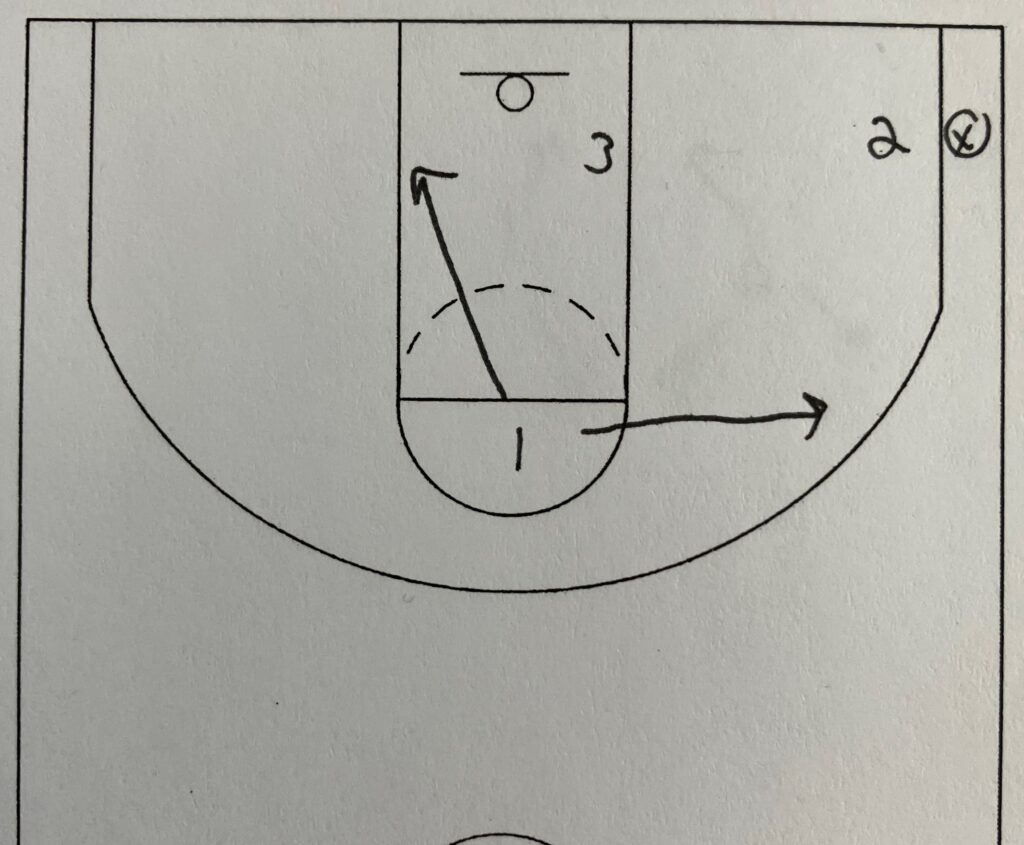
When the ball goes to the corner, the ballside block will closeout to the ball. The backside block will rotate over covering the ballside block. The top defender has options. They should cover the ballside wing, ballside elbow, and backside block at the same time. Their location will depend on where the offensive players are at that point in time. This is what makes the triangle-2 so hard to use because one player is covering everything from the ballside wing to the backside block. Players are not able to cover all that space so open shots are going to occur from the offense.
Inverted Triangle-2

This takes the traditional triangle-2 and inverts the players. Now there are 2 players at the elbow and only 1 player by the rim. In this setup one of the elbow defenders will step up and stop the ball in a very similar fashion to a 2-3 zone.
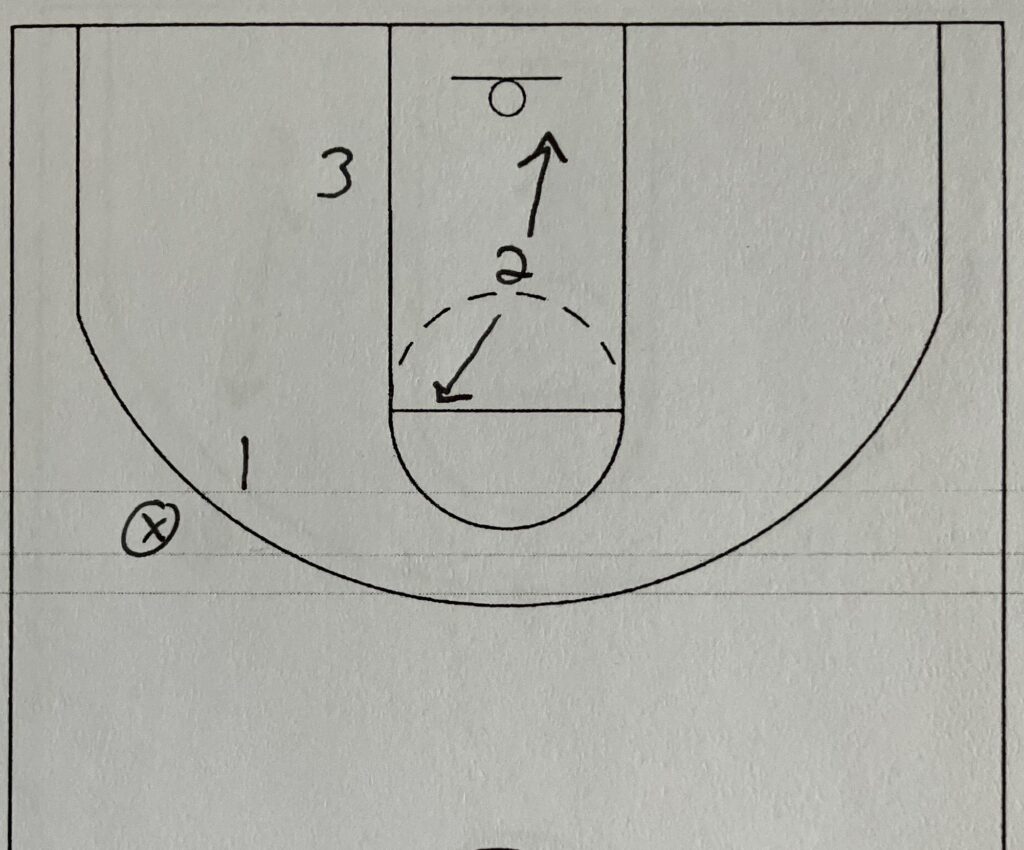
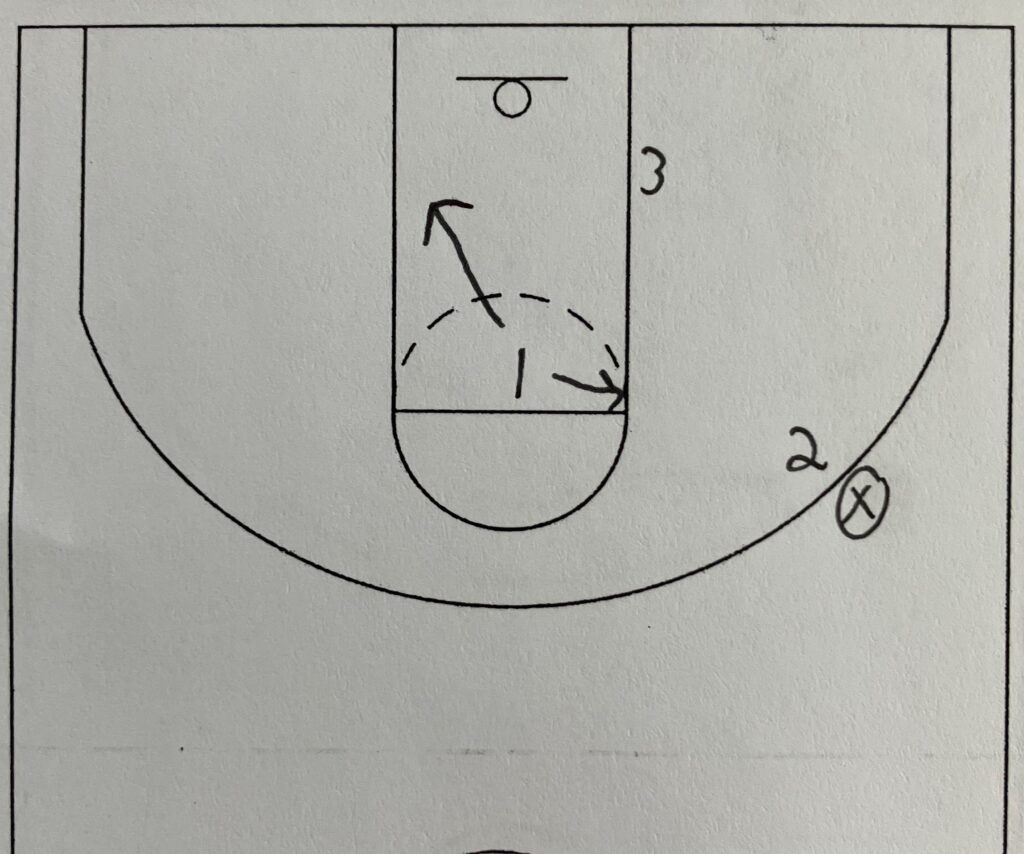
The wing rotation are much easier in an inverted triangle-2 than the traditional triangle-2 setup above. The ballside elbow takes the ball. The bottom moves over to the ballside block. The backside elbow is either taking the high post or backside block again depending on the offense.
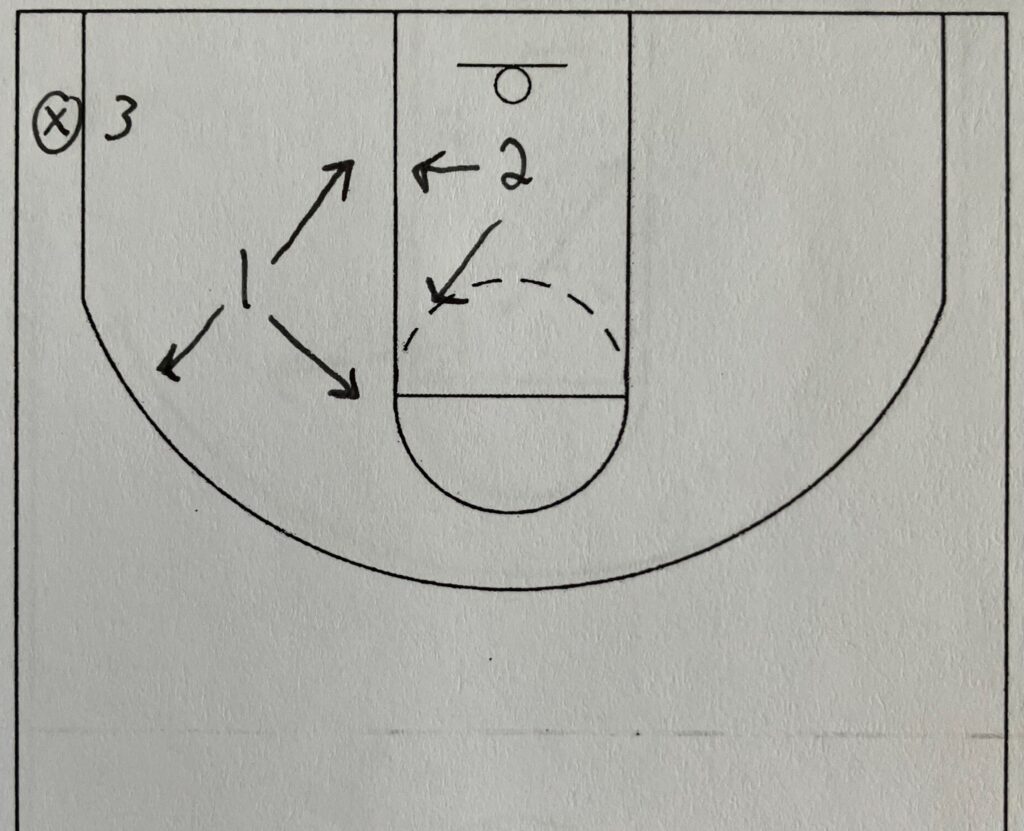
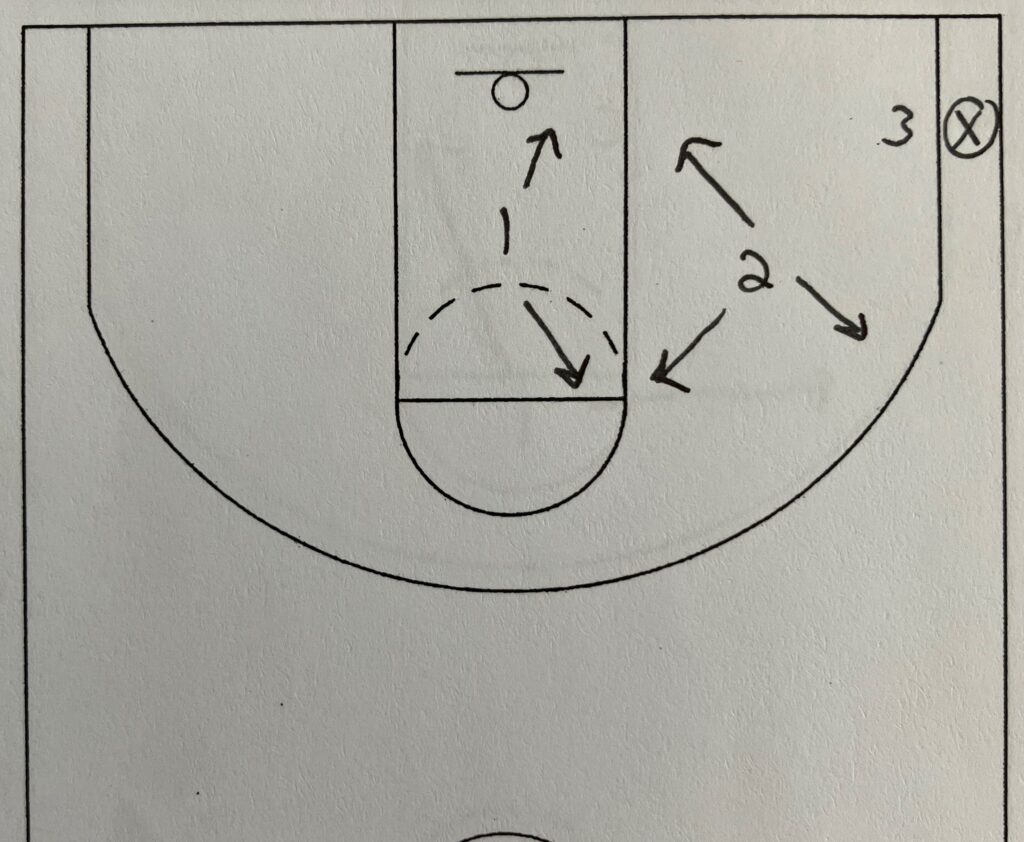
The inverted matches up better when the ball is above the foul line but when the ball is below the foul line or inside then it is basically a scramble by the players to defend. In the corner, the bottom defender takes the ball. The bottom defender is working similar to a 1-3-1 zone in this case. Now the two guards are trying to matchup to the offense. The ballside elbow could be on the wing, elbow or low block. The backside elbow defender could be at the elbow, or either block. This is a lot of moving by the 3 zone players.
If you are wanting use the inverted triangle, then I would have the matchup 2-3 zone as a primary defense. The moving and communication needed to run the inverted is really only seen in a matchup zone.
Trapping in a Triangle-2 Defense
As you can see from the above diagrams, there is no way to trap with the 3 zone players in a triangle-2 defense. Now if one of the players being guarded man catches the ball, then you can trap with the zone defender responsible for that area along with the man-to-man defender. Other than that, there is no trapping in a triangle-2 defense.
Personnel Needed for a Triangle-2 Defense
The only required personnel is two good man-to-man defenders. The other 3 defenders are playing zone. These 3 players need to be able to communicate with each other and try to be in good spots to help with the 2 best offensive players while maintaining a closeness with the other 3 offensive players.
Keys to a Triangle-2 Defense
1) Contain Best 2 Offensive Players
The triangle-2 defense is designed to contain the best 2 offensive players. If this is not happening, then the triangle-2 defense should be changed. This is the biggest reason to use the triangle-2 defense so this is the biggest key for the defense. If the 2 best offensive players are still able to score a bunch of points, then try another defense.
2) Communicate
The 3 zone players need to be constantly talking to each other. The 3 zone players have to worry about all 5 offensive players whereas the 2 man defenders are only worrying about their man. The 3 zone players are basically playing a 5 on 3 each possession. The best way as a defense to make the game easier is to talk to each other. This constant communication makes it easier to keep track of each offensive player. By listening to each other on defense, each player can know what is behind them without turning around.
And now with the triangle-2 the 3 zone players are having to cover more of the half-court so knowing what is happening at all times is essential. There are areas of the floor where 2 of the 3 zone defenders can both be in the same spot. Those 2 defenders need to quickly communicate with each other about who is taking the ball and who is dropping back into their other zones.
3) Rebound
The best 2 offensive players should be boxed out by the 2 defenders guarding them. The 3 zone players have to box out and rebound against the other 3 offensive players. Due to the zone the 3 zone defenders may have trouble getting good box outs. The shot may come from one of the 2 players being guarded man. If the defense is doubling those 2 players, then the defense is down to 2 defenders having to rebound against the other 3 offensive players. This puts the defense at a disadvantage. The 3 zone players must rebound collectively and not give up offensive rebound putbacks.
Youth Basketball
No. Just no. Everybody likes to win but there is no reason to play a triangle-2 at the youth level to try and win the game that much. Priorities in youth basketball should be development and the triangle-2 does nothing for development.
Conclusion
The triangle-2 should only be used at the high school level, varsity at that, and probably only in a tournament setting or trying to win a title. It is a defense that should be a last resort at that as well. There is just too much space being given to the offense that most teams will be able to attack the triangle zone effectively. If a team has tried everything else and has not found a defense that works, then maybe the triangle-2 might make the offense have to slow done and figure it out. This could give the defense a minute or two to come up with something else to try. Overall, I would not recommend this defense to be used but some coaches may disagree with me. I, personally, have never seen a triangle-2 work.


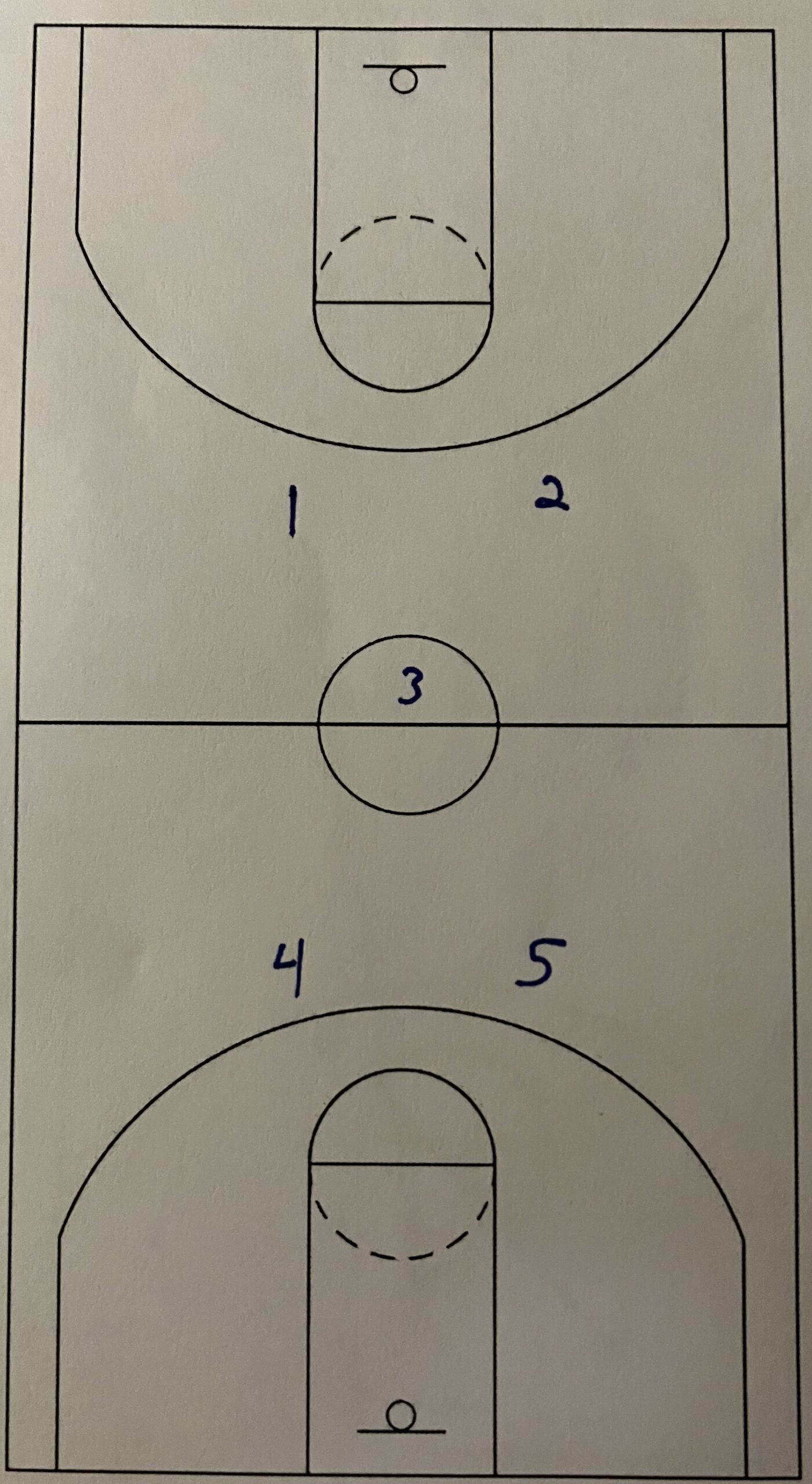
3 thoughts on “Triangle and 2 (Verted or Inverted) Guide”